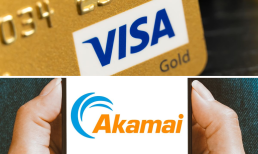Amazon’s ongoing effort to automate consumer shopping has taken its latest step forward with the release of its newest gadget, the Dash Shelf. In testing for most of 2020, the newest Dash gadget is now available to the general public to make their re-ordering lives simpler.
The nondescript flat black shelf comes in three sizes: small (7 by 7 inches), medium (12 by 10), and large (18 by 13), each costing $20. Like all Dash products that have come before, the device is linked to the company’s Dash Replenishment Service and is advertised as knowing when a consumer is running low on the goods stored on the shelf well enough to automatically reorder it without the consumer having to do anything.
The Dash Shelf, as described by Amazon, is designed to help consumers automate the shopping process around certain goods. The question as it enters the market is whether it will manage to succeed where other Dash products have failed.
Early Responses
Some reviews were effusive, mostly notably one at Digital Goods titled “I’m so obsessed with this awesome $20 smart home device from Amazon.”
Other official reviews were a bit less enraptured, and a bit more keyed in on the improvements the device is going to need, noting that items stored on the shelf must be programmed so the shelf “knows” what goods are on it. Putting any non-connected items on the shelf confuses it. Moreover, the shelf only knows what is on it, not what reserve of a bulky good like toilet paper the consumer has elsewhere, meaning it can re-order prematurely. Some have suggested that the auto-ordering function is too autonomous, and the shelf could be more customer-friendly by sending notifications before orders are actually made.
Advertisement: Scroll to Continue
The unofficial reviews on the Amazon site were a bit more mixed. Some reviewers praised the device, saying it had been a highly useful tool for themselves or elderly relatives who had a difficult time getting to the store to keep up with essential orders. Others lauded the concept but said the selection of goods they could actually tie to the product was too low, and that they were not able to auto-replenish the items they bought the product to auto-replenish.
Some complained that they did not need a $20 gadget to tell them when they were low on dog food, as their low-tech eyes were up to the job of seeing that. And a few reviews openly mocked the concept, like the reviewer who recommended putting stacks of $100 bills on the scale such that Amazon would continually refill them.
Can Dash Go The Distance This Time?
The new shelves are the latest gadget coming to the Dash rodeo, joining Dash Buttons and Wands among offers made under the Dash branding. The success track rating so far, it seems, has been limited. Dash products entered the market a half decade or so ago, to a lot of fanfare. PYMNTS’ Karen Webster heralded them as the start of Amazon doing to the grocery business what it did to the book business.
“Dash isn’t just a little plastic button that a consumer sticks on the front of the washing machine and uses to order Tide at will. It’s a commerce platform for matching consumers with the branded products that they like to buy,” Webster wrote in 2015. “But not just any consumer and not at any retail store — high-spending Amazon Prime customers who shop at home — and already do on a regular basis — with Amazon.”
But for all of Dash’s early potential, it has had some difficulty going the distance and delivering on those high expectations. Wands entered and disappeared from the market fairly quickly in 2017. Dash buttons hung around for a few years and were formally discontinued last year, with Amazon signing them off as a learning experience.
“We look forward to continuing support for our customers’ shopping needs, including growing our Dash Replenishment retail product line-up and expanding availability of virtual Dash Buttons,” Amazon said when it discontinued physical dash buttons las year.
Will Dash Shelves succeed in closing the deal with consumers in a way the buttons didn’t? Reviews indicate they still have some perfecting to do. But if Amazon has demonstrated anything over the last half decade, it is that the Dash program is a work in progress and one it is going to keep tinkering with.




